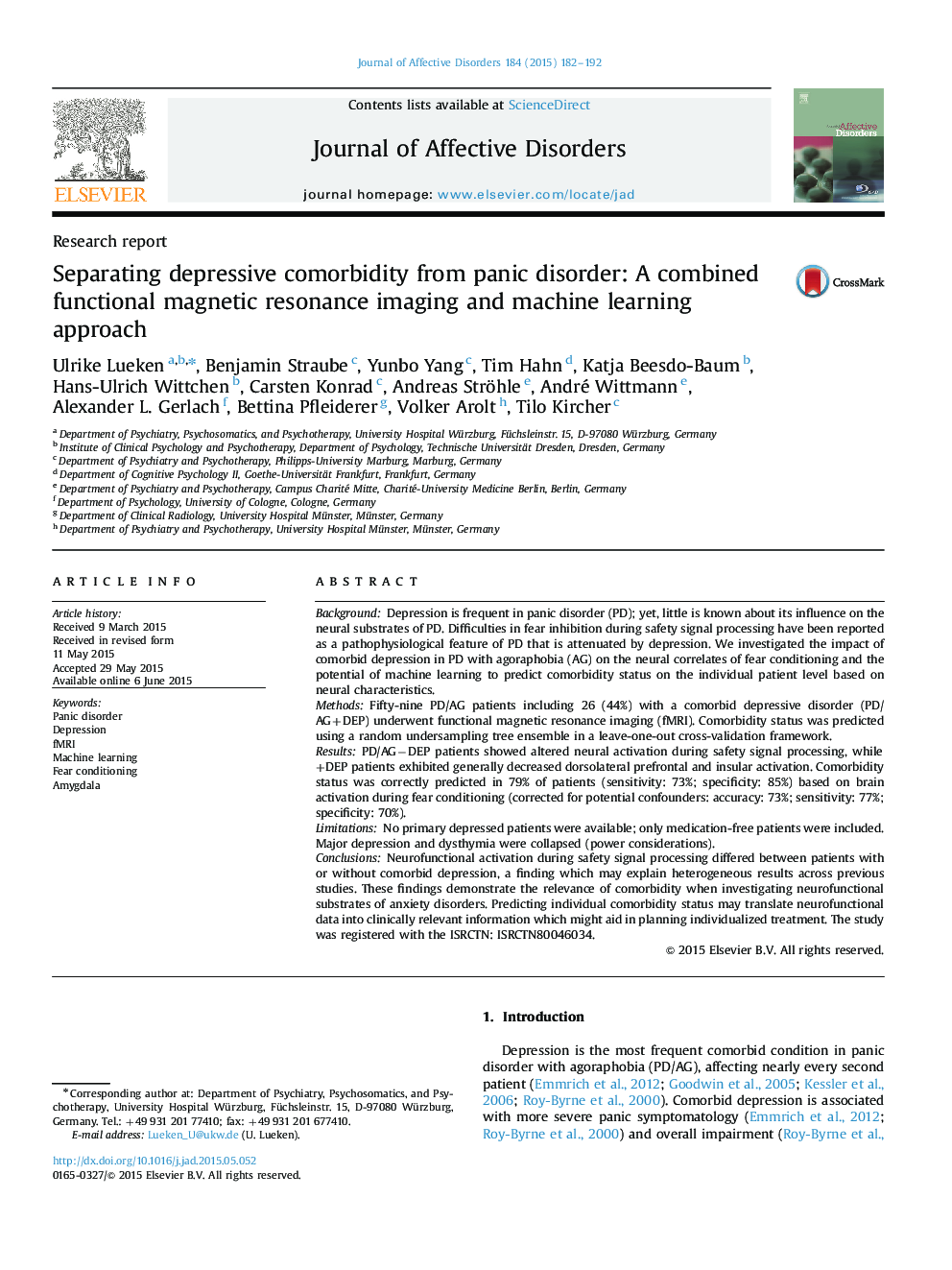| کد مقاله | کد نشریه | سال انتشار | مقاله انگلیسی | نسخه تمام متن |
|---|---|---|---|---|
| 6231282 | 1608141 | 2015 | 11 صفحه PDF | دانلود رایگان |
- Comorbid depression is frequent in panic disorder with agoraphobia.
- Its impact on the neural substrates during fear conditioning remains unknown.
- Only non-depressed patients showed altered safety signal processing.
- Depressed patients showed decreased prefrontal cortex and insular activation.
- Comorbidity status could be predicted in up to 79% of patients using brain data.
BackgroundDepression is frequent in panic disorder (PD); yet, little is known about its influence on the neural substrates of PD. Difficulties in fear inhibition during safety signal processing have been reported as a pathophysiological feature of PD that is attenuated by depression. We investigated the impact of comorbid depression in PD with agoraphobia (AG) on the neural correlates of fear conditioning and the potential of machine learning to predict comorbidity status on the individual patient level based on neural characteristics.MethodsFifty-nine PD/AG patients including 26 (44%) with a comorbid depressive disorder (PD/AG+DEP) underwent functional magnetic resonance imaging (fMRI). Comorbidity status was predicted using a random undersampling tree ensemble in a leave-one-out cross-validation framework.ResultsPD/AGâDEP patients showed altered neural activation during safety signal processing, while +DEP patients exhibited generally decreased dorsolateral prefrontal and insular activation. Comorbidity status was correctly predicted in 79% of patients (sensitivity: 73%; specificity: 85%) based on brain activation during fear conditioning (corrected for potential confounders: accuracy: 73%; sensitivity: 77%; specificity: 70%).LimitationsNo primary depressed patients were available; only medication-free patients were included. Major depression and dysthymia were collapsed (power considerations).ConclusionsNeurofunctional activation during safety signal processing differed between patients with or without comorbid depression, a finding which may explain heterogeneous results across previous studies. These findings demonstrate the relevance of comorbidity when investigating neurofunctional substrates of anxiety disorders. Predicting individual comorbidity status may translate neurofunctional data into clinically relevant information which might aid in planning individualized treatment. The study was registered with the ISRCTN: ISRCTN80046034.
Journal: Journal of Affective Disorders - Volume 184, 15 September 2015, Pages 182-192
